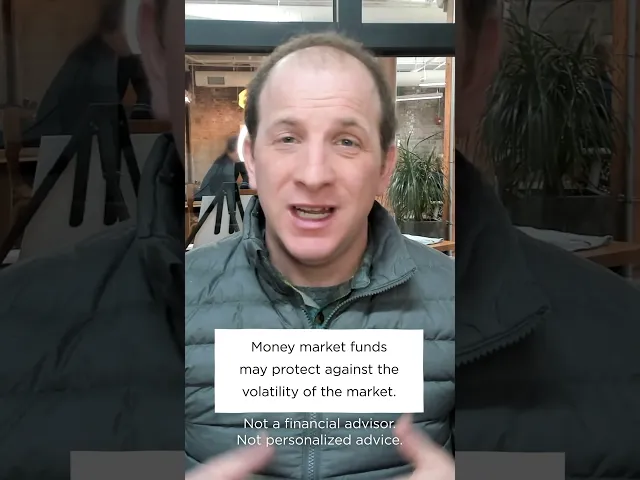Passive income is a regular cash flow that requires little or no daily effort to maintain. Passive income is considered unearned income by the IRS because it doesn’t come from active employment. Examples include investment income or rental property income.
This is the opposite of active or earned income, which is generally defined as income received from working at a job or as a contractor. That’s not to say passive income is easy money — in fact, the opposite can be true. Most ways to generate passive income require an upfront investment of either money, time or both; the income part comes later (in some cases, much later). But once you’ve made that initial investment, passive income can pay off for years to come.
You can earn passive income through investing in certain financial assets or by starting businesses that, after an initial investment, start to generate income without regular work. The taxes you’ll pay on passive income may vary depending on the source of the money, so make sure you keep careful records of your earnings.
12 passive income ideas
1. Dividend stocks
One way to build an income stream is to invest in dividend stocks, which distribute part of the company’s earnings to investors on a regular basis, such as quarterly. The best dividend stocks increase their payout over time, helping you grow future income. (Learn more about dividends and how they work.) As a bonus, dividend stocks typically are less volatile than growth stocks, so they can help diversify and even stabilize your investment portfolio. Investors can also choose to reinvest dividends back into the stock, potentially increasing your investment if the stock does well.
Our Nerds’ top brokers
Shop our rigorously researched Best-Of Awards for the year’s smartest brokers and advisors.

2. Dividend index funds and exchange-traded funds
This is a form of passive investing for those who prefer a more hands-off approach.
Index funds hold a well-rounded selection of many stocks that aim to mirror the performance of a given index, such as the S&P 500. A dividend ETF or index fund will invest in a selection of stocks that pay dividends. Index funds can help balance portfolio risk, as market swings tend to be less volatile across an index compared with individual stocks.
Dividend ETFs offer the diversification benefits of index funds while mimicking the ease with which stocks are traded. To invest in dividend stocks, index funds, ETFs or other publicly traded assets, you’ll need to open a brokerage account if you don’t already have one.
3. Bonds and bond index funds
Rather than buy an ownership stake in a company through stock, bonds are a way for investors to lend money to companies — as well as federal, state and local governments — and collect interest income. Bonds are considered a safer investment than stocks, but also generally earn a lower return on your investment.
Tax Filing Webinar — Jan. 17
File your taxes with confidence: Grab your limited spot to join the Tax Nerds in this one-hour session about tax filing and tax planning strategies.

Experts suggest investing a portion of your portfolio in bonds because of their lower volatility and relative safety compared to stocks, then having a higher ratio of bonds in your portfolio the closer you are to your investing goal (such as retirement).
4. High-yield savings accounts
Another way to earn passive income (albeit at a lower level than stocks and bonds) is a high-yield online savings account, which can be ideal for growing your emergency fund. The interest paid by savings accounts is added to your balance.
High-yield accounts are a type of federally insured savings account that earns an interest rate that’s often much higher than the national average. The APY of these high-yield accounts may vary slightly, and over time, those small differences add up to real cash, so it pays to shop around for where you put your savings.
🤓Nerdy Tip
Savings account interest rates are higher than they’ve been in years. You can take advantage with one of our picks for the best high-yield savings accounts.
5. CDs
A certificate of deposit is a type of savings account that’s used for a fixed period of time. For example, you might deposit funds in a three-year CD, and in exchange, you’ll receive a fixed interest rate for those three years. This is in contrast to a high-yield savings account, which typically has a variable interest rate.
CDs often pay higher interest rates than savings accounts, because they require you to lock up your money for a set period of time. (You’ll pay a penalty if you want to access your funds before the CD term ends.) If you’re willing to do that, locking in interest rates while they’re high can be well worth it — especially if you expect them to come down soon, as many experts do.
6. Rental properties
Investing in real estate to earn rental income is another way to build passive income. Long-term rentals can provide a reliable source of cash if they are located in a healthy market for renters, but they also carry long-term stressors like maintaining those properties, as well as paying multiple mortgages, property tax bills and other costs.
You could also focus on short-term rentals through a platform like Airbnb, which is dependent on a steady flow of visitors to your area. Or, start small: Rent out a room in your house to begin to bankroll your rental property empire.
7. Peer-to-peer lending
An alternative to traditional bank loans, peer-to-peer lenders, like Prosper and Lending Club, match investors who are willing to lend money with borrowers who are vetted by the platforms for creditworthiness. It’s riskier than putting cash in a high-yield savings account or money market fund, but also potentially can earn more interest — as much as 5% or more.

Nerd out on investing news
Subscribe to our monthly investing newsletter for our nerdy take on the stock market.
8. Private equity
Perhaps the original form of peer-to-peer lending, another common form of passive income is funding a private business you believe has the opportunity to generate future income. For high-net-worth individuals, this might be investing in private equity funds, which are typically only available to accredited investors who meet certain net worth or income requirements.
Another way is to back a family member, friend or other trusted partner to help fund their business with an agreement to earn returns from any future profits. But beware: No matter how large or small, investing in a single business is an inherently risky, long-term bet. Never invest more than you can afford to lose.
9. Content
A way to build passive income at home is through payments for the use of intellectual property that you have created yourself, or for which you’ve purchased the rights.
Creating content can be a lot of work, especially for work that is engaging and reaches a large enough audience to generate income.
But once you’ve created something that people are using, it’s possible to generate revenue through display advertising, using a program such as Google Adsense, or to run sponsored content, which means companies pay you a fee to publish a post on your blog.
Another way to monetize a blog is affiliate marketing, which allows you to earn commissions if your readers purchase a product or service you’ve recommended or linked to. You may, however, find that creating content is not as hands-off as you might expect; there’s always pressure to create more content or update what you have to keep it viable.
10. Real estate investment trusts (REITs)
If you want to build passive income from real estate without the fuss and bother (not to mention the hefty down payment) of buying and managing properties yourself, REITs may be the answer.
Similar to mutual funds, REITs are companies that own commercial real estate, such as office buildings, retail spaces, apartments and hotels. REITs tend to pay high dividends, but they vary in complexity and availability. Some are publicly traded on stock exchanges; others are not.
New investors may want to stick to publicly traded REITs, which you can purchase through an online broker. You can also diversify your real estate holdings by investing in mutual funds or ETFs that track multiple REITs.
11. Crypto staking
Crypto staking is a way of growing your holdings in certain cryptocurrencies by using them to help verify activity on an underlying blockchain network. When you stake a cryptocurrency, you can be rewarded with more cryptocurrency.
Staking, for most people, involves delegating your cryptocurrency to someone who is compiling records of transactions on the network on which it runs. Those verifiers need to put some tokens at stake to guard against fraudulent transmissions. By giving the voting power of your tokens to a reputable verifier, you can get a share of the rewards they receive for carrying out their job accurately.
But there is some risk: If the verifier you’re working with is penalized, you may be as well. And staking sometimes requires you to commit your holdings for a set period of time, meaning you can’t sell or trade them.
Several crypto platforms offer staking programs, though these arrangements have recently experienced regulatory scrutiny in the U.S. It’s important to note that staking is not available on all cryptocurrencies — notably Bitcoin does not support staking.
12. Money market funds
Like high-yield savings accounts, money market funds are currently paying lucrative interest rates — you can find rates upwards of 4%. Money market funds are mutual funds that invest in lower-risk securities like short-term government debt or corporate bonds that pay income. In some cases, that income may be tax-exempt. Keep in mind that money market funds are not the same as money market accounts, which are more similar to a savings account and typically come with FDIC insurance.


